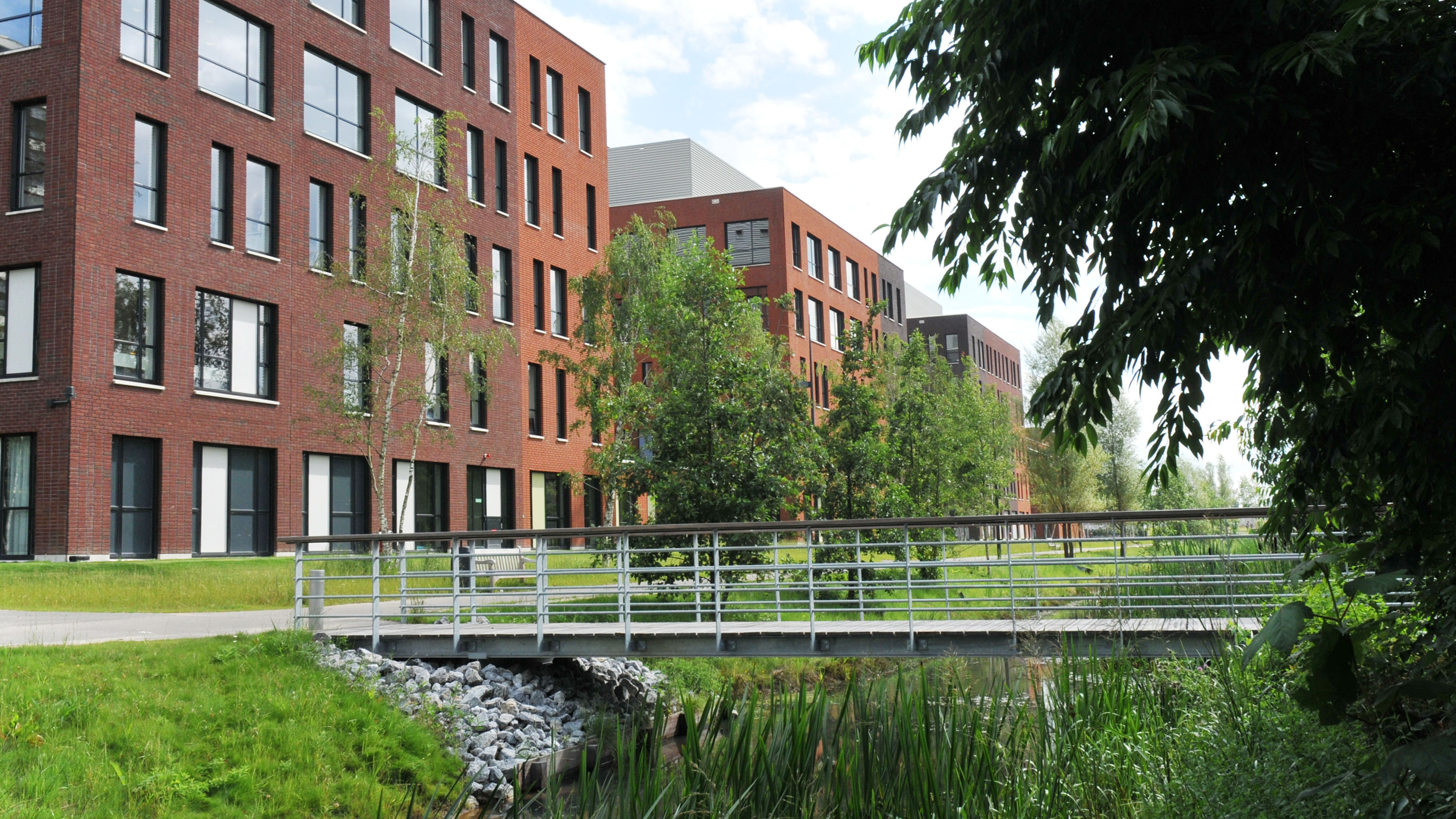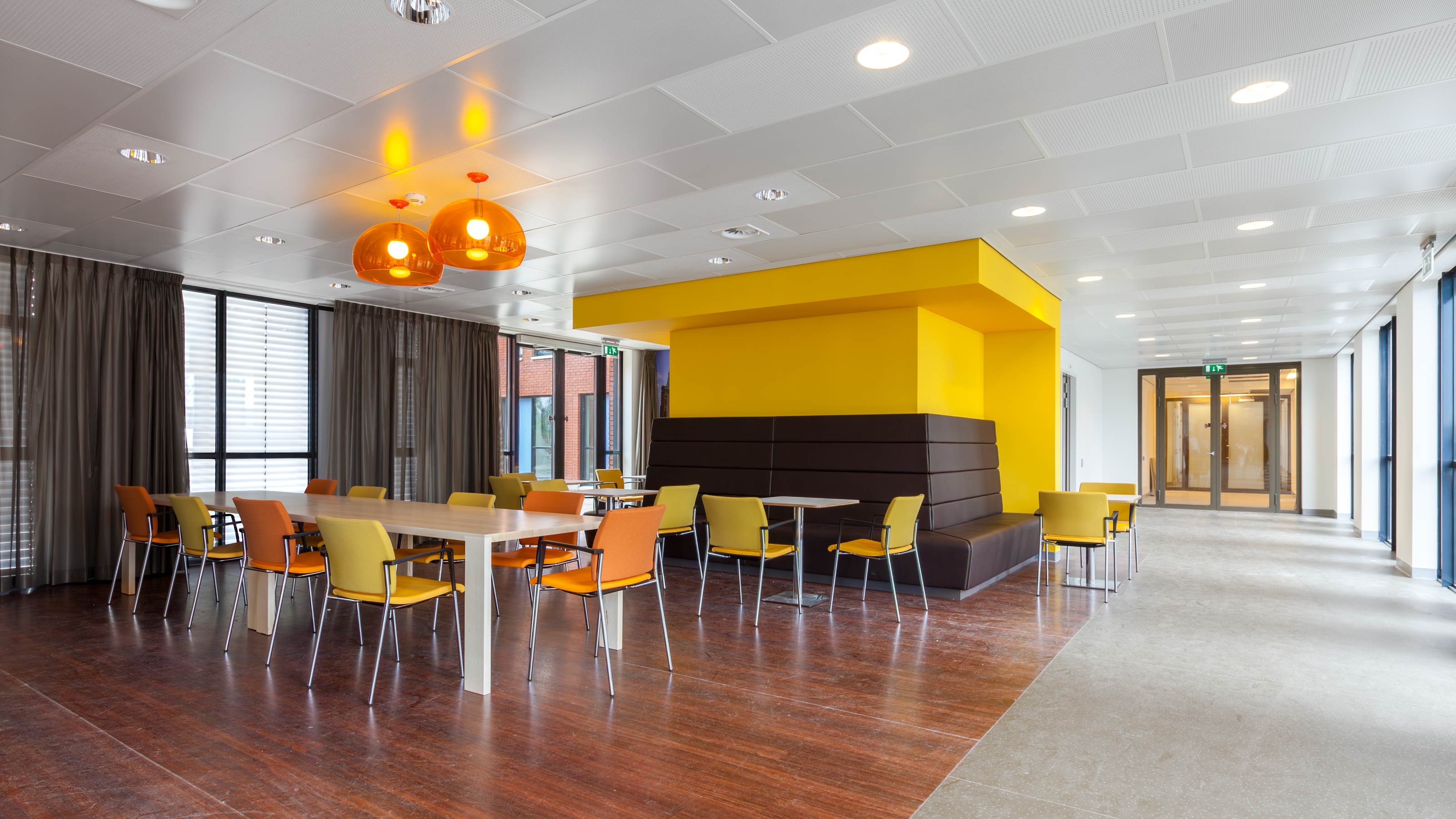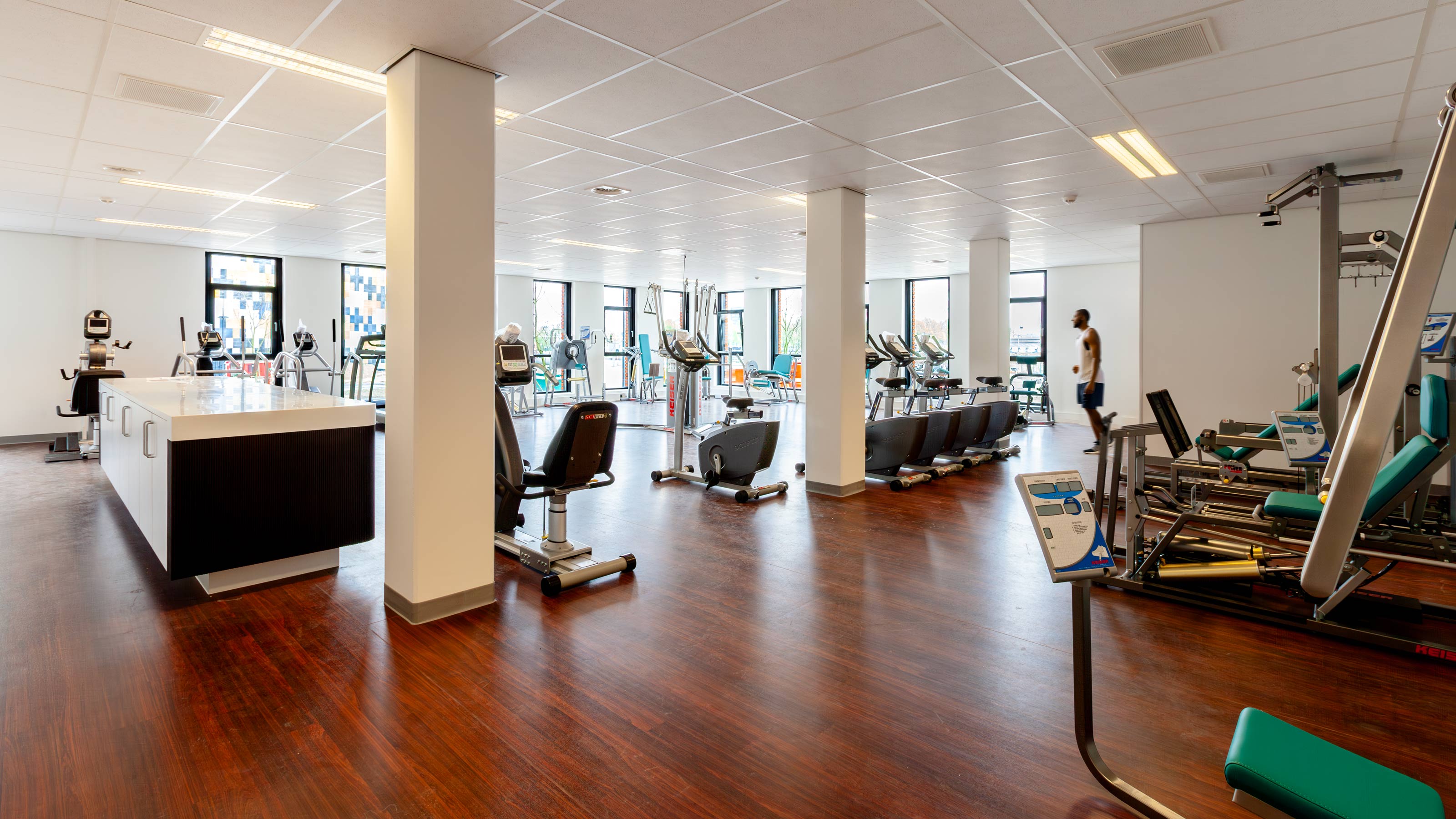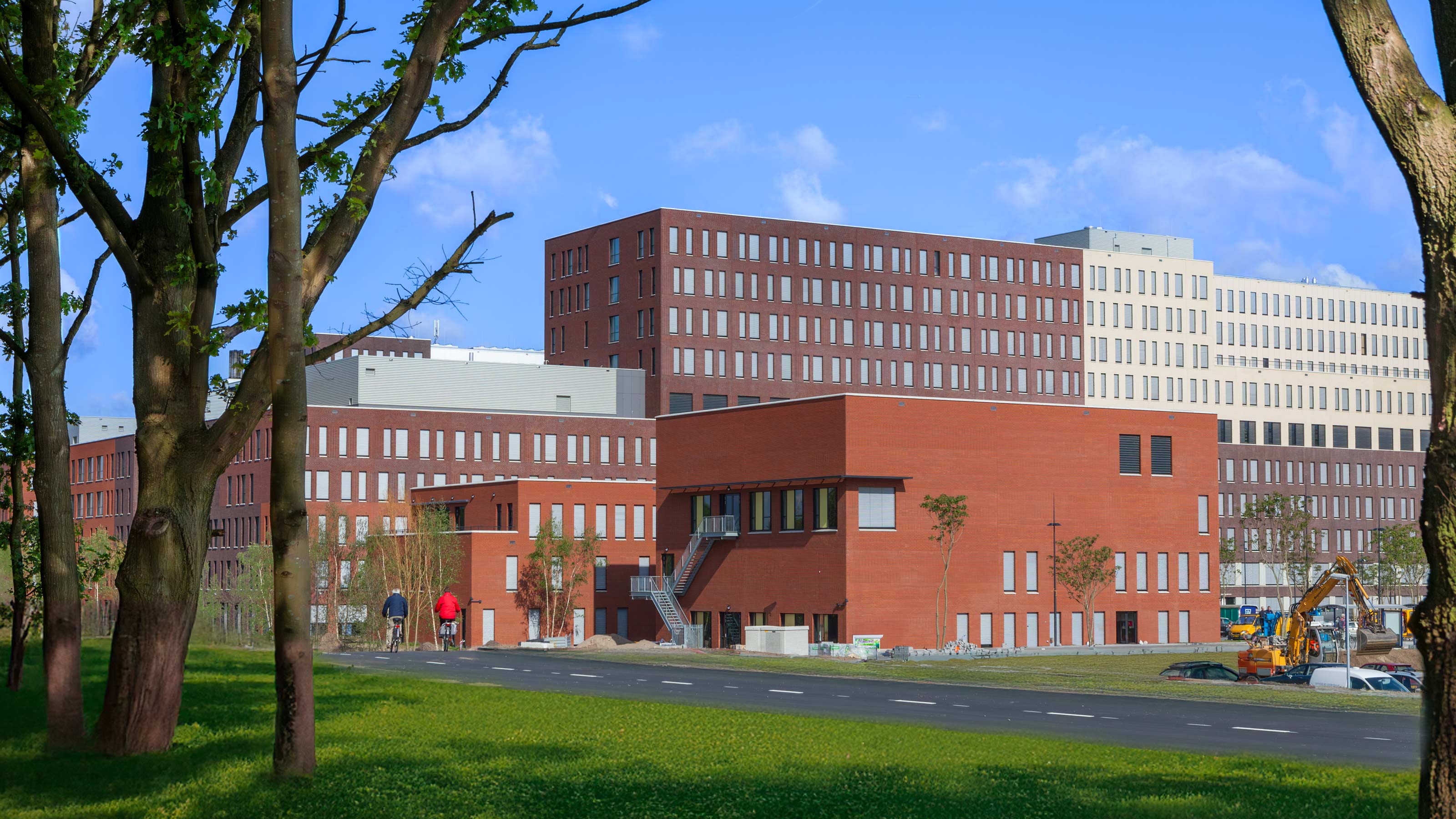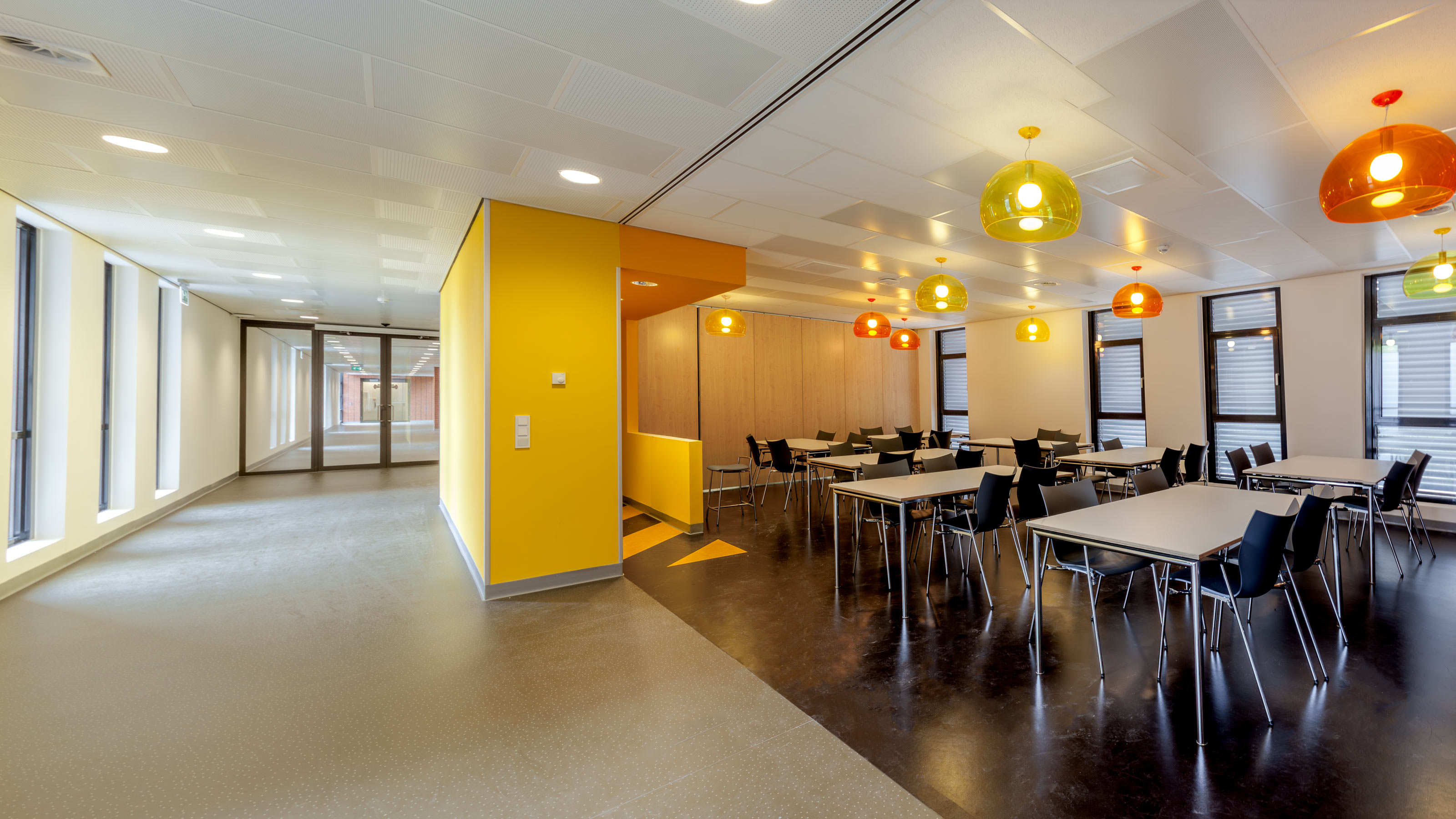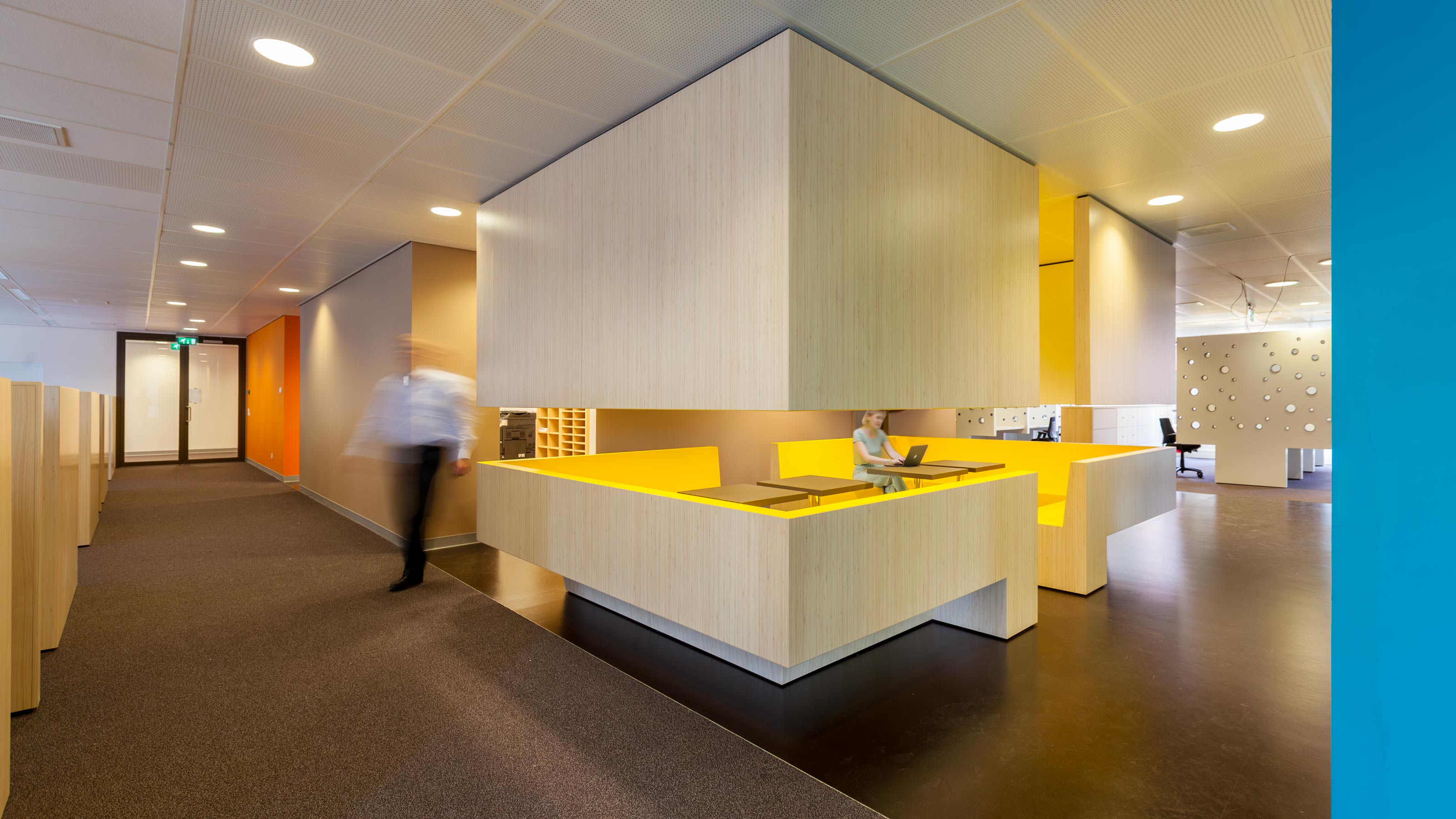Recovering in a custom-designed environment
A sustainable, safe and healthy environment in which children and adults can work on their recovery toward (renewed) independent functioning. That is what the Jeroen Bosch Hospital strives for. EGM Architects designed a building with colour, natural light, views, and especially lots of greenery.
View the entire projectThe Tolbrug rehabilitation centre is part of the Jeroen Bosch Hospital, and is the main centre of expertise regarding rehabilitation care in the North Brabant region of the Netherlands. Adults and children come here for both physical and cognitive rehabilitation, with the goal of being able to function independently in society once more. EGM designed a tailor-made, safe environment, with lots of natural light and views. Although Tolbrug is connected to the Jeroen Bosch Hospital, it has its own identity and a separate entrance in the front square.
Healing Environment
The Tolbrug consists of three elongated building sections, allowing much natural light to enter the building, and ensuring views of De Gement natural area from all over. Here, clients can recover in an environment that on the one hand makes them feel connected to the outside world, while on the other hand providing protection for the vulnerable phase they are going through. The building has been divided into zones, so that people can recover in the environment that suits them best.
Zones for individual support
The centre consists of three wings: two autonomous wings, and one communal wing that is shared with the hospital. The building is divided into three zones, each wing having its own zone. There is a low-stimulus zone for clinical treatments, a normal zone for outpatient rehabilitation, and an exposure zone for external rehabilitation. Recovery is supported in each of the zones by means of their interior design concept, colour scheme and choice of materials. Patients are intended to rehabilitate starting in the low-stimulus zone, moving via the normal zone to the exposure zone, with the eventual goal of integrating back into society.
From low-stimulus to exposure
For the most part, the low-stimulus zone is for people with neurological disorders. Here, everything is aimed at providing the client with as much peace and quiet as possible. As a result, this zone has the character of a nursing ward. In the normal zone, rehabilitating patients are prepared for more independent functioning. With its special practice rooms, twin bedrooms, personal living rooms and roof terrace, this zone is more hotel-like in character. In the exposure zone, people can practice their motor skills in the swimming pool, fitness area, the gym and the practice gardens. Here, they literally mix more with other people.
Practising in a natural area
The practice gardens, designed for this purpose by MTD Landscape Architects, include an athletics field, a private greenhouse and practice trails. The gardens and the natural area blend seamlessly. A practice bridge connects the gardens to De Gement, creating a private practice circuit.

